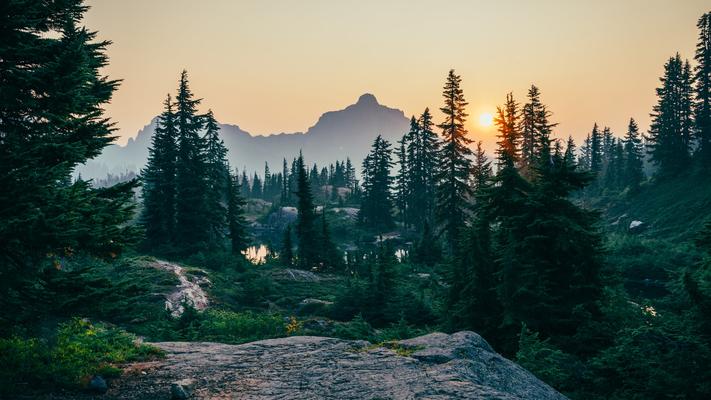In the shadow of Mount Kilimanjaro, elephants, black rhinos and giraffes roam the expansive rangelands of Chyulu Hills. So too do tourists, who normally flock to the region to catch glimpses of its iconic wildlife. In pre-pandemic times, seasonal safaris generated income and wages for the Indigenous Maasai and Kamba communities living in southeastern Kenya.
Of course, COVID-19 upended this cycle. But when lockdowns and travel restrictions destroyed ecotourism revenues, local communities found a lifeline. With tourism at a standstill, they were buoyed by proceeds from the sale of carbon credits linked to their lands.
Since 2017, Chyulu Hills has been the site of a carbon credit project that provides communities with financial incentives to protect the land by avoiding unsustainable practices such as charcoal burning and overgrazing.
The project is owned and managed by a consortium that includes four Maasai communities, local conservation organizations and Kenya’s national parks authority. So far, it has helped to conserve and restore 404,000 hectares (1 million acres) of land, protect threatened species and prevent the release of around 37 million metric tons of carbon emissions.
Emission reductions from avoided land conversion are a global good. But in a pandemic year that plunged more than 2 million Kenyans into poverty, the project’s impacts on local communities are just as significant.
In 2020, the Chyulu Hills carbon credit project directed more than US$ 3 million into Maasai and Kamba communities. It supported scholarships for more than 400 children, and helped refurbish schools and hire new teachers. Revenues from the project provided salaries for new local rangers, who helped crack down on a spike in poaching. Organizers also used funds from the carbon credits to set up community beekeeping farms — providing 630 hives across the area. A solar-powered honey processing facility is in the works to help families sell their honey and diversify their incomes.
Unlocking revenues for Maasai and Kamba communities, the carbon credits provided a safety net for the people who protect nature when they needed it most. These revenues contributed to advancing a form of climate justice that is long overdue. After all, climate change is not an equal opportunity crisis. Its devastation is caused by the world’s wealthiest people yet felt disproportionately by the poorest.
At its core, the climate catastrophe is a moral issue, not just an environmental one. Local communities in developing countries suffer the worst consequences of our warming planet — rising seas, droughts, extreme weather — despite having almost no responsibility for causing it. Equity and investments in communities on the frontlines of climate change must be part of the solution.
Carbon markets provide communities with financial incentives to keep forests standing — flipping the economic equation that has made some of Earth’s most critical ecosystems more valuable dead than alive. Proceeds from the sale of high-quality verified carbon credits in these markets, when designed well with required safeguards, bring resources into communities that are protecting nature. This in turn helps those communities build resilience and cushion the blow of global shocks such as COVID-19. Programs supported by carbon credits help communities exercise autonomy and agency over their lands; they promote sustainable, long-term livelihoods derived from forests.
Conservation International has worked with local partners around the world to develop carbon credit programs under the United Nations-backed REDD+ framework, which helps countries value their forests’ climate benefits.
It’s no accident that these programs support local communities. High-quality carbon credit programs are designed with human well-being in mind and rely on working with and listening to local communities. After all, the decisions they make are the ones that matter in the end.
Across the globe from Kenya, in Peru’s Alto Mayo Protected Forest, a carbon credit program helped communities not only survive the pandemic’s economic downturn, but thrive. Under voluntary conservation agreements financed by the sale of carbon credits, local communities — many of whom have small coffee farms — commit to zero net deforestation in exchange for agricultural and financial training, and access to specialty-grade coffee markets. It’s a boost to farmers’ productivity that doesn’t increase their environmental footprints.
Not only has the project helped reduce deforestation in the protected area by more than half and avoid 8.4 million metric tons of greenhouse gas emissions, it also improved farmers’ yields. Last year, the local coffee cooperative exported 336 tons of organic and fair-trade coffee to Europe, New Zealand and the United States — one-third more than the previous year. A win for people, nature and climate — that’s a successful investment on any balance sheet.
